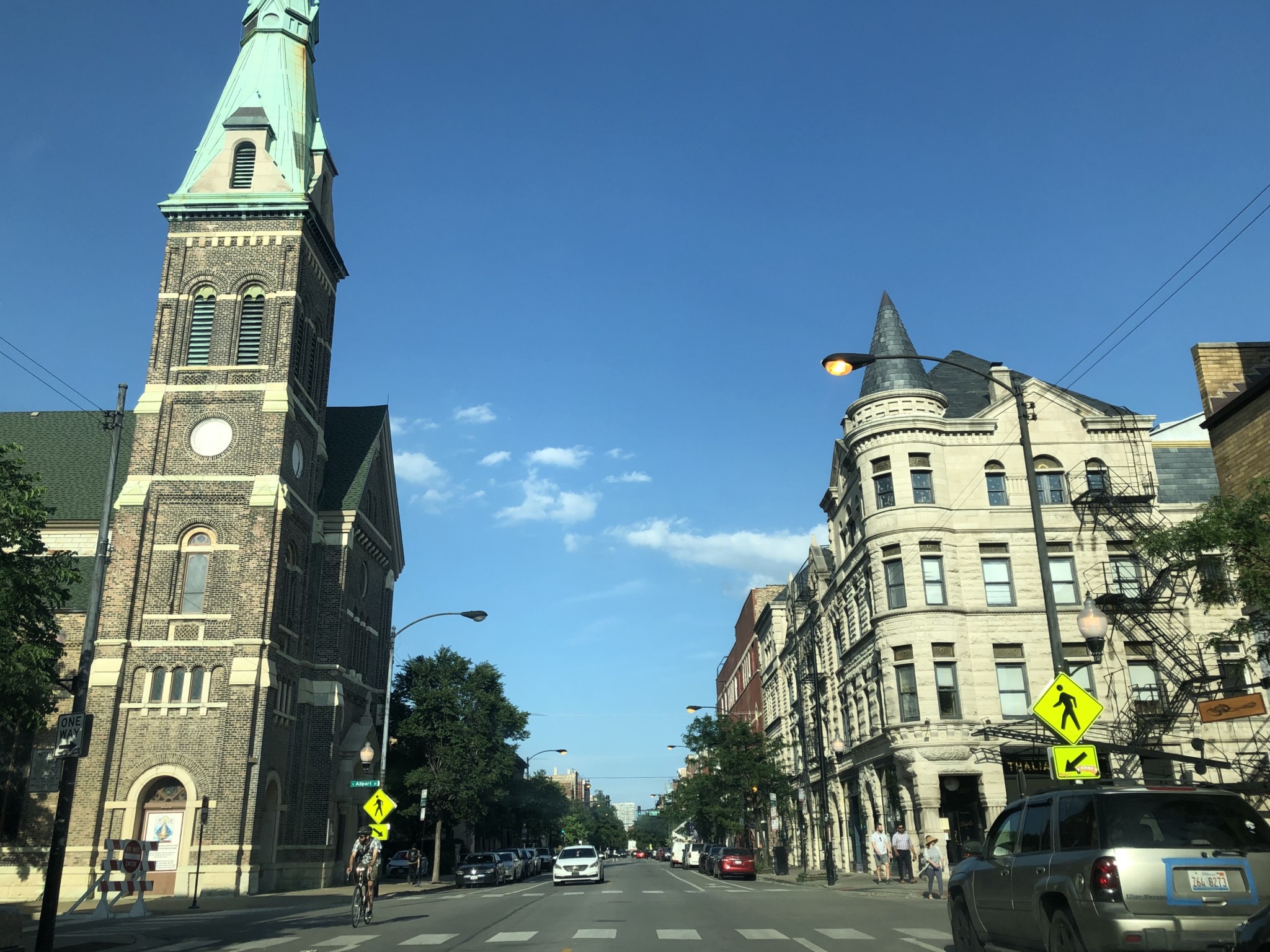- Best Mural Restoration
- Best Taco Walk-Up Window
- Best One-Stop Shop for Cultural Treasures
- Best Three-Way Intersection
Have you ever experienced “la 18” at 8am? The vibe is different, but it always reminds me of my childhood, going to la Casa del Pueblo with my dad or going to pick up carnitas. The sun shines bright, illuminating all the beautiful colors on the Pilsen walls. It’s funny, but every time I walk in Pilsen I am not just seeing the present, I am also seeing the past. Old memories. The good old days.
It’s true that we’re in 2020, but there are still so many gems and special things in the barrio. I grew up in Pilsen, born and raised. And it is those gems that keep me going and staying. From Mestiza Shop, to Panaderia El Refugio, Tonantzin Shop, El Paseo Community Garden, Benny’s Pizza, and more. There are many beautiful and sacred things in Pilsen.
I keep saying, “I think I can stay for a year more.” Then something happens that causes me to realize I might leave soon. It’s that realization that makes me think I am losing my community. For a long time I couldn’t articulate why I would feel so much pain leaving the neighborhood. It’s not the end of the world. But then I heard an inidgenous woman speak about a word that exists in her language; the word means rootless and she went on saying that, like a plant, people can also feel rootless. It’s like they don’t feel a strong connection to the land or their community. It is important to feel that and to have that. This is why I would feel so much pain at the thought of literally ripping my roots out to move somewhere else and start over. My roots run deep in Pilsen. It gives me so much life and sustenance.
My poor mother keeps saying all the time now, “No recuerdo a nadie en la 18. Ya no hay nadie que conozco.” (“I don’t recognize anybody on 18th.There’s nobody I know.”) That is why when I see las señoras on 18th Street I make sure to say, “Hola, buenos dias,” or “Hola, buenas tardes.” It makes them happy. I can see their smile. As much as my body knows it is time to find a new home, I still feel so tied to this community.
But the last few incidents on my block have really made me feel unsafe. My block is a hot spot for gang violence. Every year it never fails. I hear gunshots. What has hurt me is to realize that it is me that can be killed. It is me, the person who’s done everything they can to stay, it is me who is part of the community’s culture and beauty. This is the person who could get killed? It is not fair.
Then I see the erasure of my community. I see people coming into the community checking in like it’s a hotel and doing what they want without any remorse or consideration for those that have been living here for years. It’s hard to tell if they are community members or simply transient.
They think we don’t want life and progress in Pilsen just because we have so many empty storefronts. But the truth is we don’t have access, because who has an extra $2,000 to pay for a storefront and make their own rent? I would open my own space in Pilsen in a heartbeat but I can barely make ends meet.
But I found ways to follow my passions in Pilsen without having a brick-and-mortar location. I realized I can do so much with collaboration by being in spaces that are accessible that integrate my visions and intentions there. Nothing will stop me from providing for my community, not even the expensive rents. This is why I have mad respect for people like me making it happen in Pilsen. They found a way to stay and to thrive. This is why I make sure to support the local businesses and entrepreneurs. If I want to keep seeing them I have to support them.
There are so many factors that weigh us down. It is not fair that as a renter I can not have pets, I have to deal with increasing rent, see new apartments going up that are not for me, and deal with the lack of parking. So many struggles and gentrification, I can see why people have left. And I get why people do everything they can to stay too, to try to make it work.
As I try to survive this overwhelming reality I remind myself that cycles happen. I have seen so many different cycles in the community. I just hope that in this cycle we are currently in we can find ways to keep our stories, dreams and voices alive.
Pilsen won’t lose people like me. I love being there for my community. I still see people getting involved and feeling connected. I might not have a 60608 ZIP code for long, but my heart will always have Pilsen. Hopefully our traditions and culture keep going. Next time you walk down la 18, take it all in and know so many are fighting to stay. (Cristina Puzio)
Neighborhood Captain Jacqueline Serrato is the editor-in-chief of the Weekly.
Best Mural Restoration
Educación para el Pueblo
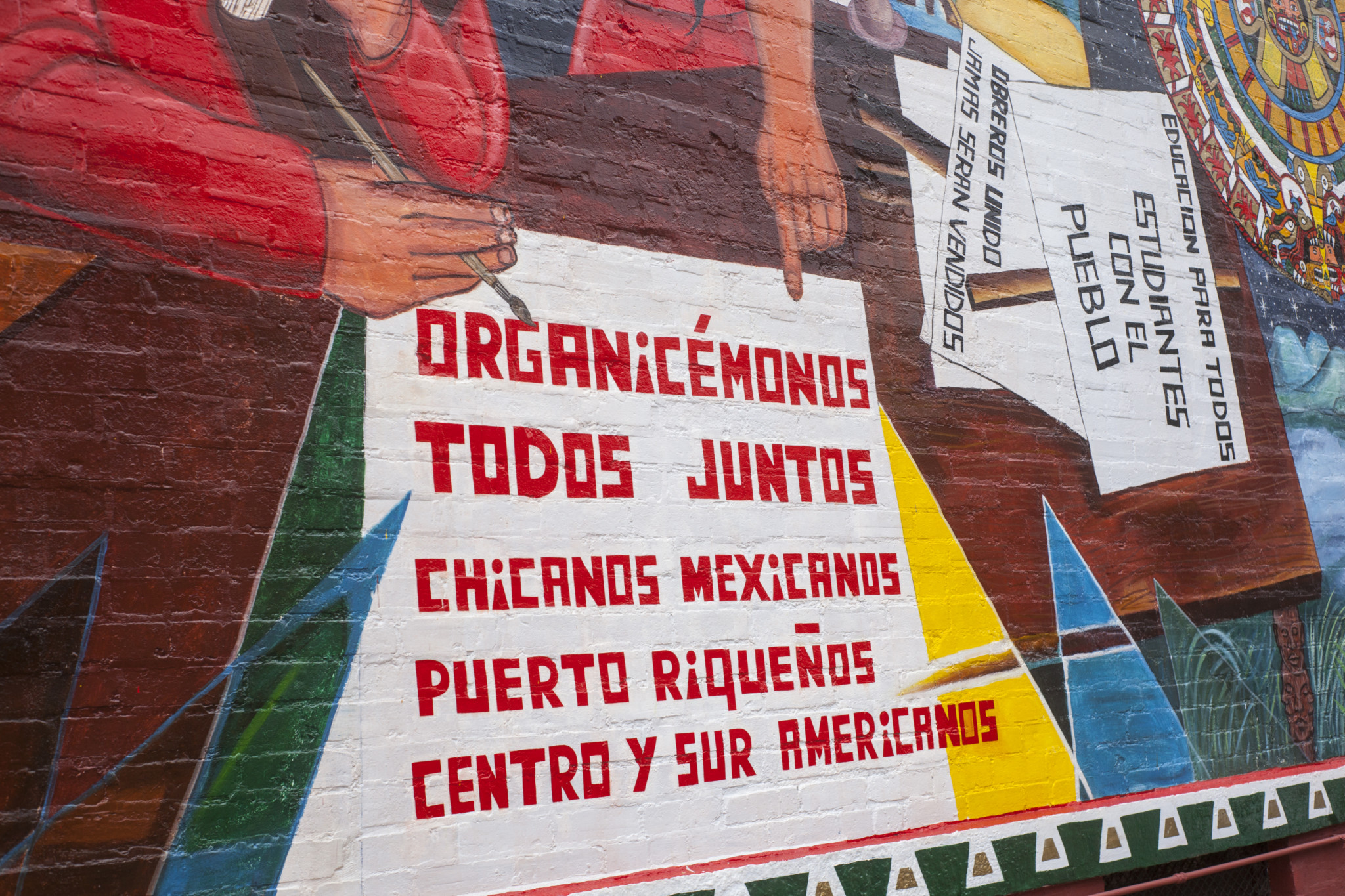
People who grew up in Pilsen remember walking past murals on their way to school, work, or church on a regular basis. One of those murals, on the corner of 18th and Racine, was fading and barely visible anymore. It was painted in 1983 by muralist Aurelio Díaz and the kids from Casa Aztlán, around the corner, on what is now Honky Tonk BBQ (Best Bacon Candy, 2013 BoSS).
Díaz settled permanently in Mexico, but he painted multiple murals in Pilsen and Little Village from the mid-seventies to the early eighties and is best remembered for his “Galería de La Raza,” a mural of indigenous faces on 16th Street that was recently restored by artist Sam Kirk. All of Díaz’s work, however, has the same elements of brown empowerment.
Rufus Linus Jr., a Black muralist who grew up in Pilsen and has murals all over the city—most prominently at Farragut Career Academy High School—decided to restore the Honky Tonk mural with the support of the owners. Throughout the fall, he worked day and night shifts to replicate Díaz’s style and restore the design of the mural, “Educación para el Pueblo” (education for the people), which was featured in the 1983 crime drama Bad Boys.
The finished product shows an Aztec calendar in the center, next to an eagle perched on a cactus surrounded by a body of water (a reference to the Valley of Mexico). On the other side of the calendar are two brown youths sitting at a table, creating protest signs and what appears to be a manifesto that proclaims in Spanish: “Let’s organize together. Chicanos, Mexicans, Puerto Ricans, Central and South Americans.”
It’s inspiring when the community steps in to save our cultural expressions when so much else is being lost. (Jacqueline Serrato)
Exterior of Honky Tonk BBQ, 1213 W. 18th St.
Best Taco Walk-Up Window
Taqueria Los Comales
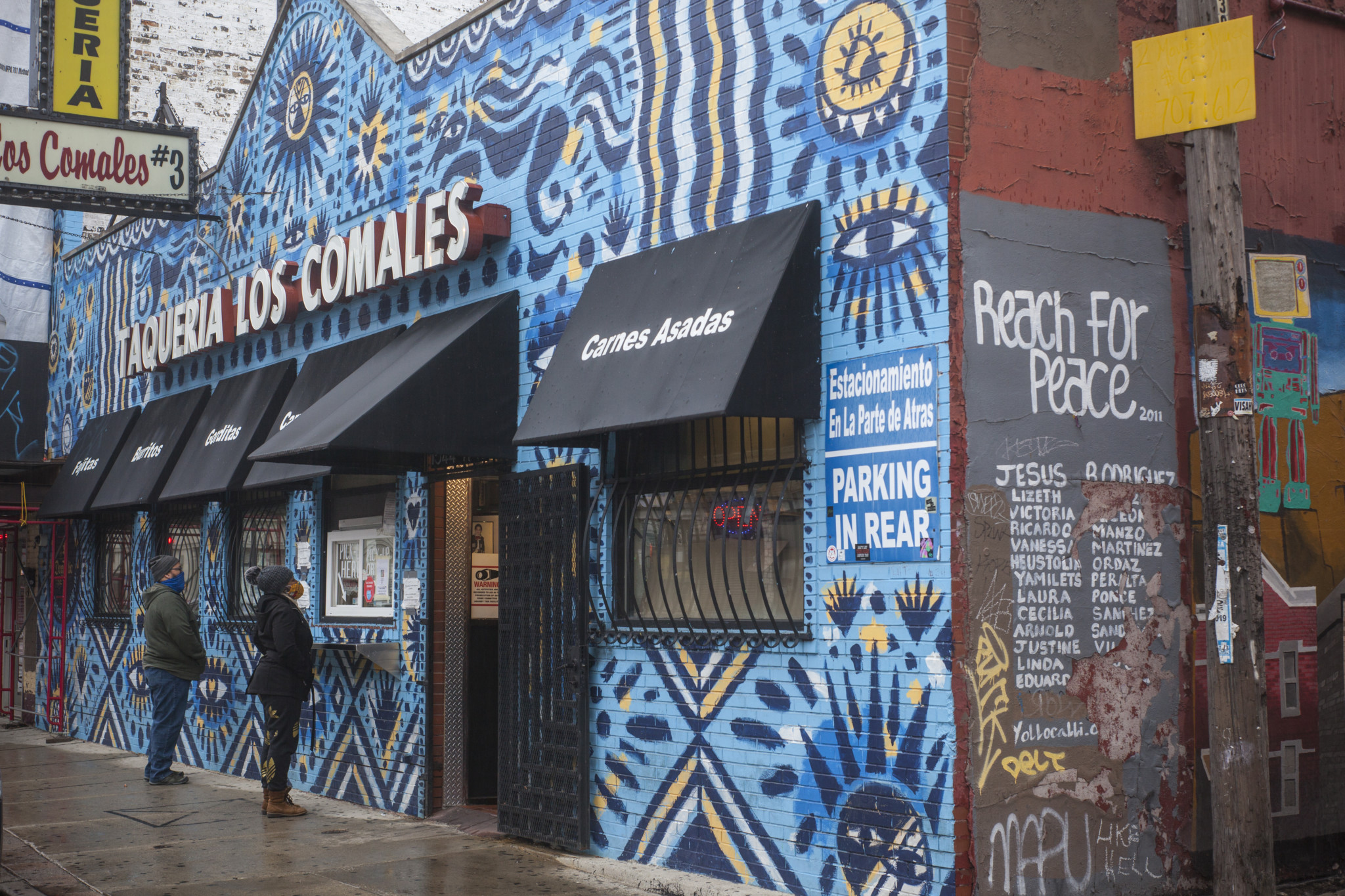
Taqueria Los Comales’ franchise has always been about carrying Mexican dining staples in the most practical way, and as late-night as possible. The original Little Village location is known for its quick drive-thru service (recognized in 2014 BoSS as Best Late-Night Drive-Thru), but during this pandemic, the Pilsen taquería overshadowed every other Comales in the city and suburbs with its walk-up window on 18th Street, near Ashland.
Customers are always waiting in line, peaking at lunch and dinner times, as waitresses take their order at the makeshift window. And it’s really not a boring wait because, if you can get a peek, you can watch the cooks inside grilling the carne asada and the cebollitas. Or take a few steps back, or walk into the alley, and appreciate the murals by Yollocalli Arts Reach youth that cover the building.
Or they can simply chill on 18th Street—even eat their tacos standing up, the Mexican way.
Established in 1988 by the founder’s brother, Miguel, the taquería is now run by the Gonzalez family’s adult children. As they have expressed in the past, they will survive a changing neighborhood—and it looks like they are surviving the COVID-19 crisis, too. (Jacqueline Serrato)
Taqueria Los Comales 3’s walk-up window, 1544 W. 18th St. Monday–Thursday, 8am–1am; Saturday, 7am–4am; Sunday, 7am–midnight. (312) 666-2251. loscomales.com
Best One-Stop Shop for Cultural Treasures
Tonantzin Community Arts and Cultural Gallery
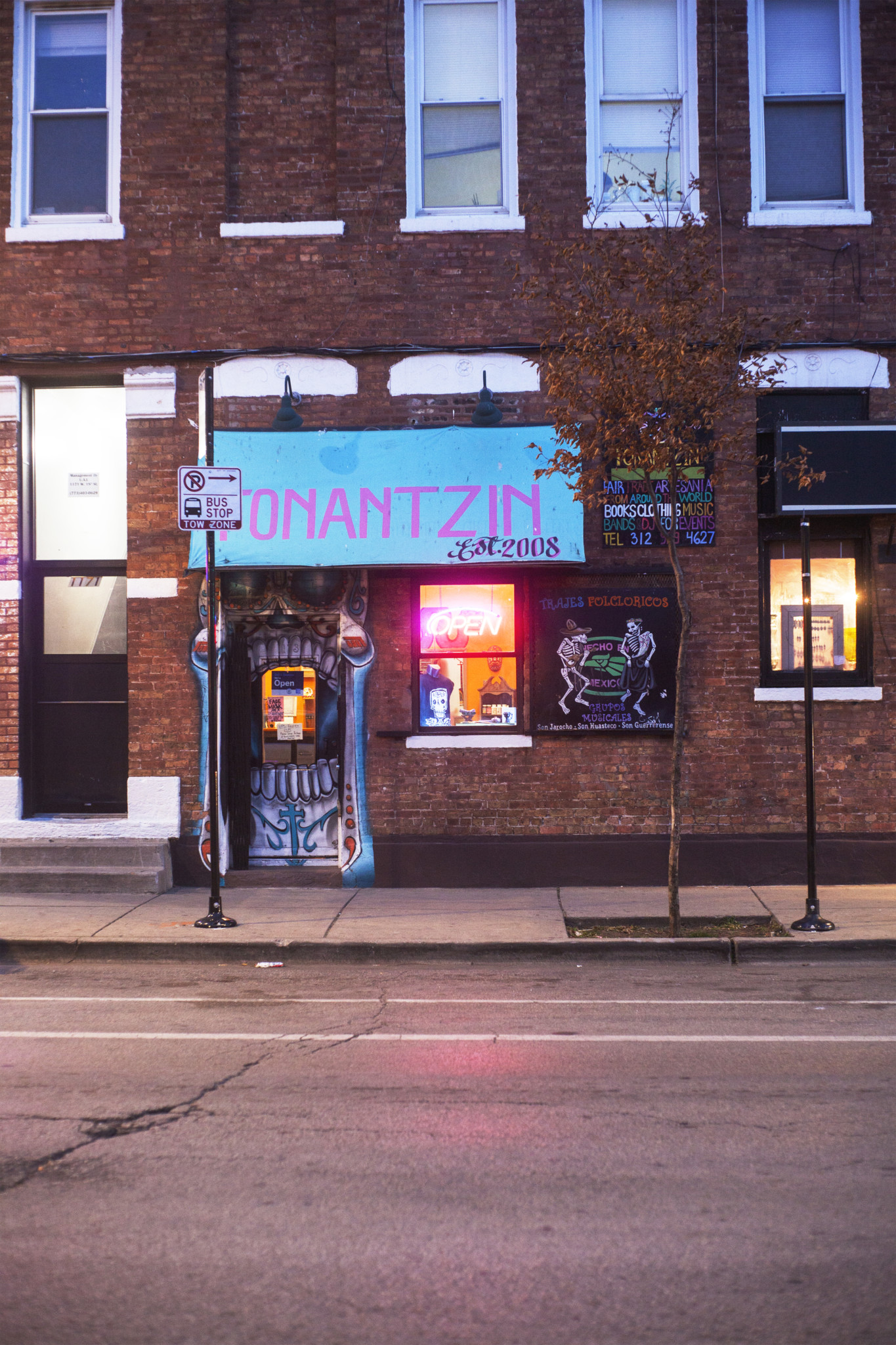
A few minutes off the 18th Street and Blue Island CTA 60 Bus Stop and a couple blocks down Racine, you’ll find Tonantzin Community Arts and Cultural Gallery, a cherished cultural shop that provides Chicago residents with lovely and unique paintings, music memorabilia, hand-crafted gifts, and custom clothing from local artists.
Tonantzin is a cultural reminder embedded in the streets of Pilsen, a one-stop shop filled with books imported from México, colorful t-shirts with embroidered calaveras, books ranging from Gabriel García Márquez to Chicago and Mexican art history, and CD cabinets filled with a variety of Latin American folk rhythms, trova, blues, urban rock, poetry, and musicians like Julieta Venegas, Flans, Camilo Sesto, plus many more eccentric romantics and pop artists that I would listen to as a courtesy to my family on Saturday mornings.
Upon entering this magical place, you’re welcomed by the soft and soothing aroma of fresh incense and the newly repainted, vibrant walls. Marcela Gallo, owner of Tonantzin, was delighted to open its doors and mark its twelfth anniversary on November 15, 2020. For Marcela, embracing her roots in Mexican literature, media, and healing has paved her path to providing residents with interesting findings from her visitations to México.
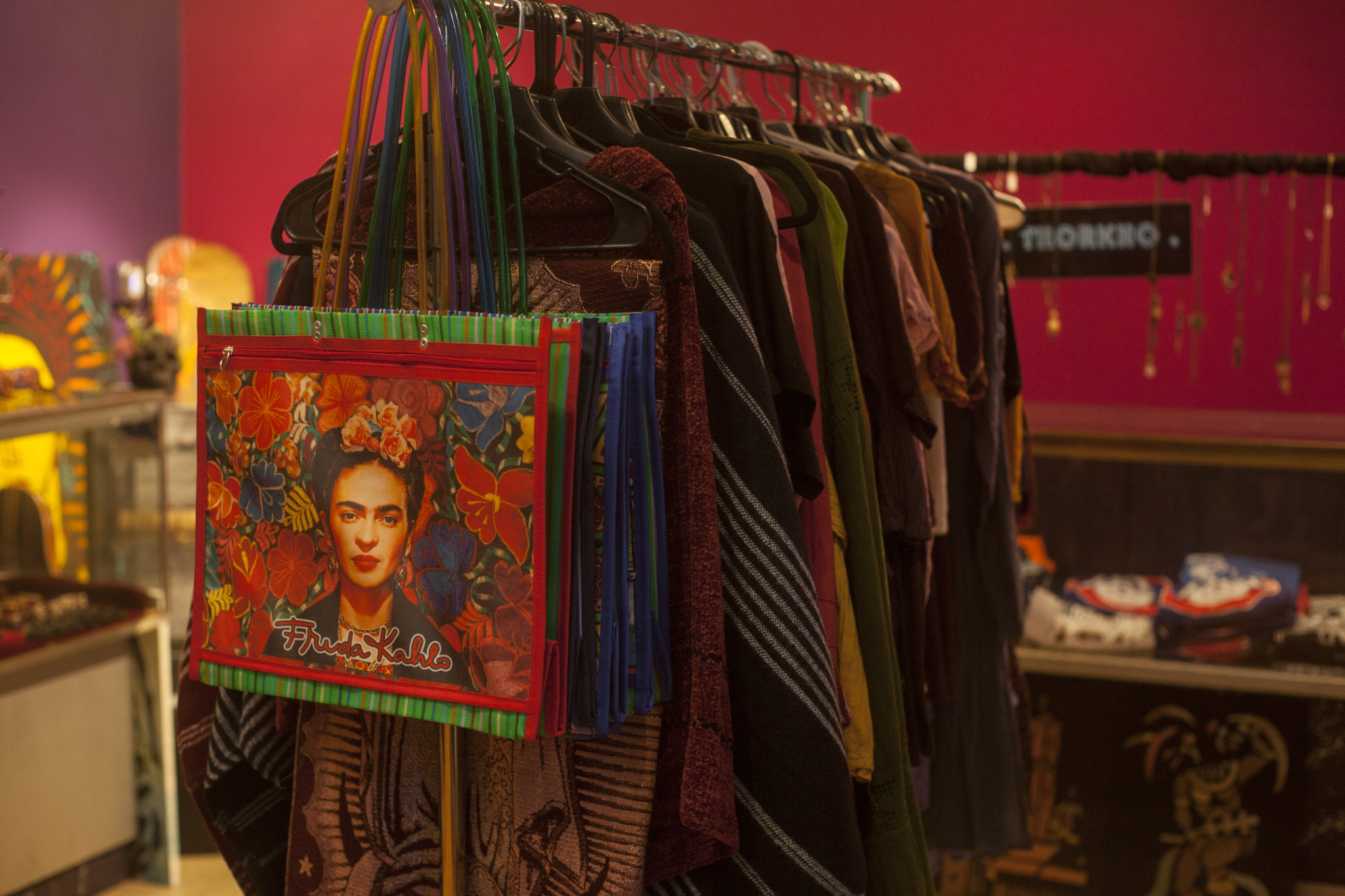
Enlightened by Tonantzin’s aesthetic, you will be able to find freshly stocked cabinets with astonishing goods. I’ve always had an interest in local and “tianguis”-style shops for their unique and rare findings. In addition to media and books, self-care essentials such as oils, incense sticks, lotions, and even beautiful jewelry decorated with gems and minerals are on display and provided for people who are interested in a self-care afternoon.
During an evening visit, I was filled with memories of what a tianguis from México has to offer. Enchanted by the hidden treasures, I always find myself digging through the shop. To fully grasp the essence of a culturally filled place, you will be encouraged to immerse yourself in the hidden wonders contained in this charming shop: what you see, what you smell, and what might that cute necklace with a sparkling gemstone chain might behold. I was welcomed like any other home. (Gerardo Salgado-Flores, Yollocalli Arts Reach)
Tonantzin Community Arts and Gallery, 1173 W. 18th St. Monday–Tuesday, noon–8pm; Wednesday–Saturday, noon–10pm; Sunday, noon–7pm. (312) 479-1970
Best Three-Way Intersection
18th, Blue Island, and Loomis
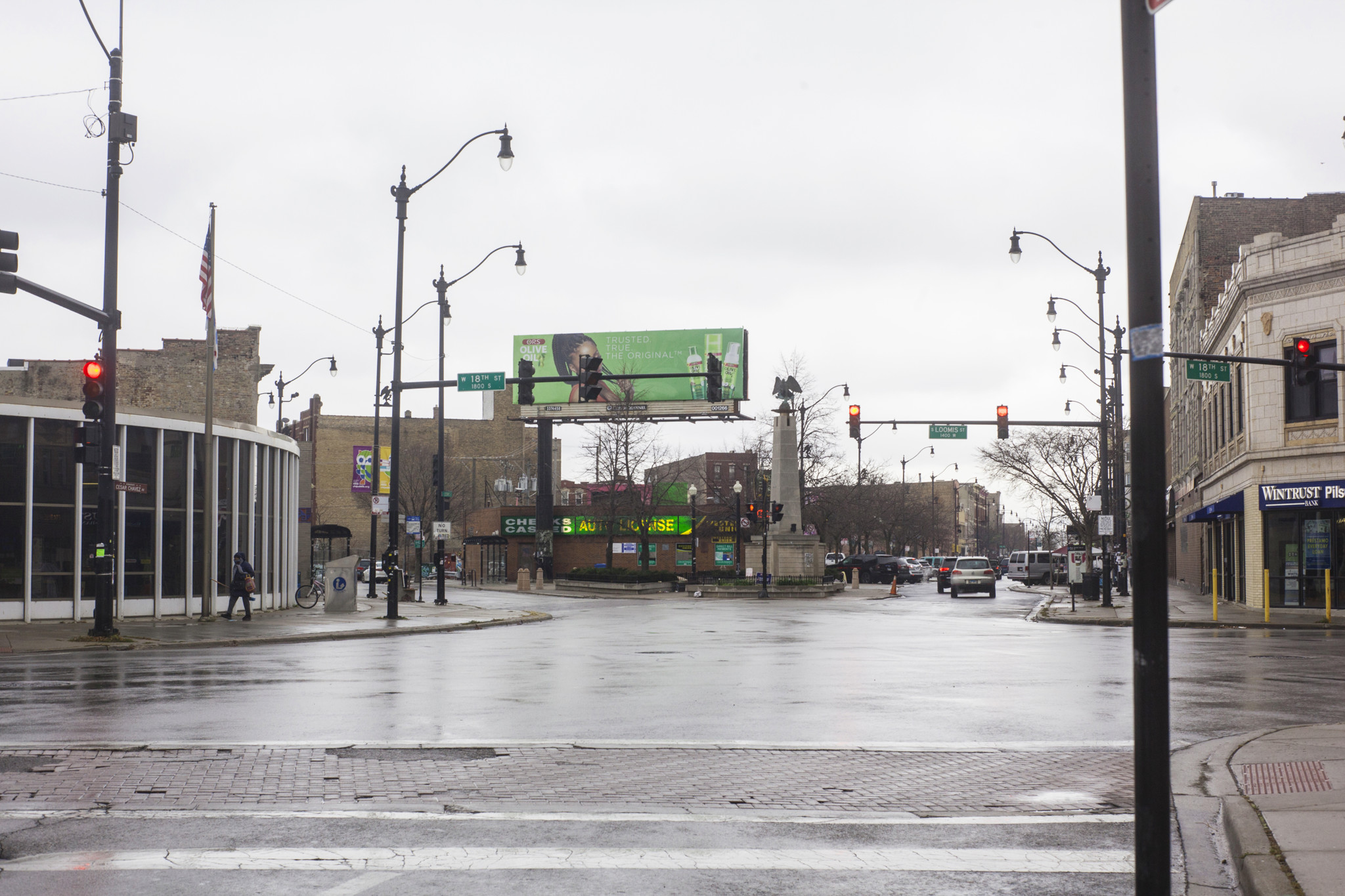
The North Side isn’t the only place where you’ll find multiple-cornered intersections. The South Side has them too.
Unlike the famous and outright dangerous six-cornered ones in Portage Park and Wicker Park, due to their traffic, the three-way intersection of West 18th Street, South Blue Island Avenue, and South Loomis Street is calm, walkable, bikeable, and not completely gentrified.
On one southern corner is the Rudy Lozano Library, which many residents see as a sort of community center. Next door is the chill Harbee’s bar. Across the street, on Blue Island, is La Casa del Pueblo supermarket and restaurant. And right in between is Plaza Tenochtitlán, an open square and gathering place for street vendors, youth, the homeless, activists, artists, and other locals.
Back in the day and up until recently, people gathered here for parades, summer festivals, and the Via Crucis.
Looking northward, on Blue Island, is one of the most magnificent views of the Sears Tower and the skyline—not yet interrupted by big development. And hopefully, it’ll stay that way, as the other corners in the intersection have already been converted into banks, corporate restaurant chains, and snazzy storefronts—a process that arguably pushed out the Yollocalli Arts Reach youth center, the former Radio Arte radio station, and a family-owned panadería.
How much longer can we keep our view of downtown, and how much longer can we keep these streets ours? (Jacqueline Serrato)
Intersection of W. 18th St., S. Blue Island Ave., and S. Loomis St.

